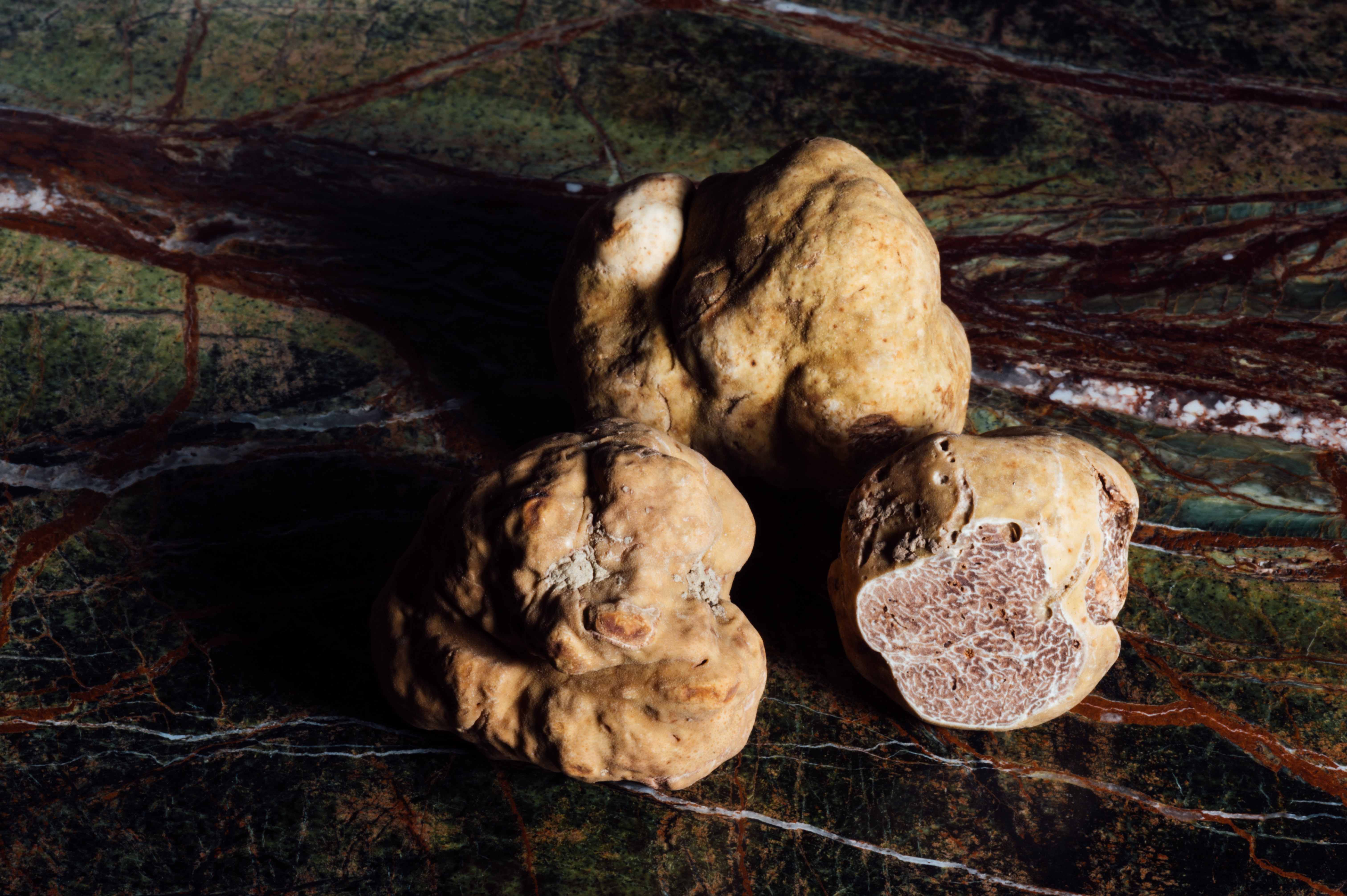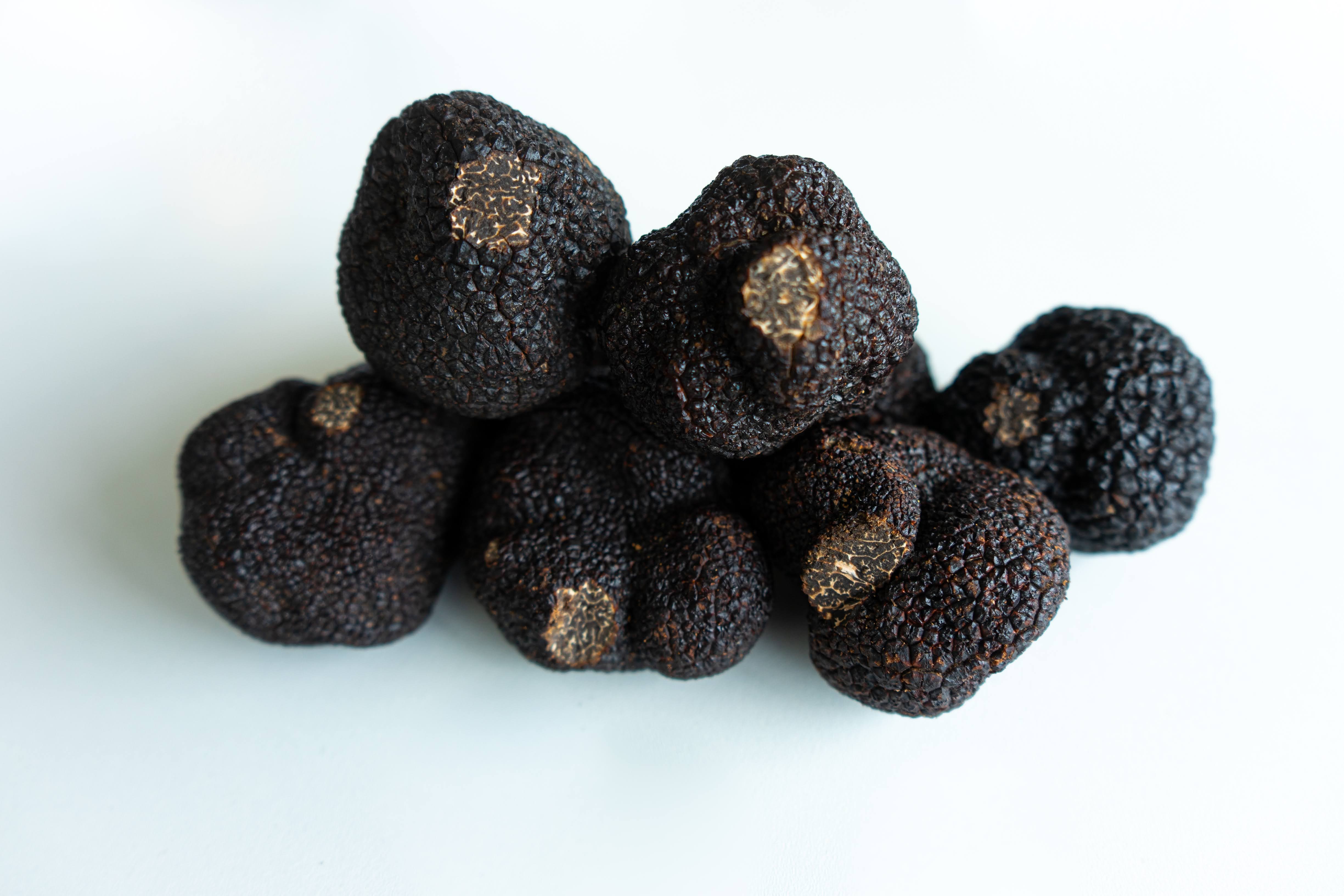Differences Between Black and White Truffles

A delight for your tastebuds and your olfactory senses, truffles may be one of the most expensive foods that money can buy, but they're more than worth it. Not for nothing have they been called “diamonds of the kitchen” by 18th century French food epicure, Jean Anthelme Brillat-Savarin. Exotic, rare, and with a taste that’s as unique as its texture, you are missing out if you haven't given truffles a try!
If you are seeking to treat yourself to a gastronomical adventure, get your hands on some truffles. But as a beginner, one may be confused over the differences between black and white truffles - the most popular fares that are available in specialty stores. In this blog, we clear the air regarding how they differ from each other.
White Truffles

The white truffle, or Tuber magnatum, hails from the Italian region of Piedmont which lies northwest, bordering the countries of France and Switzerland. With a dusty, off-white to yellow color and distinct, intense aroma, it will definitely get your attention. Many swear that it has a garlicky, almost musky taste, but in a really good way. Truffles naturally contain gas which is to thank for the strong aromatics, but when they are cut or shaved open they release the gas, releasing the smell. White truffles have more of this gas than black ones, thus are more aromatic. Be aware that the aroma and flavor fades out fast, so temperature and moisture must be closely monitored after harvest. It is best served cut, sliced, or shaved over warming foods shortly after purchasing.
The white winter truffle is considered to be the world's most expensive food by weight, and after you've had it you won't question why! The months from September through December is winter white truffle season. The summer white truffle - although widely available and more affordable - has a less intense flavor profile and aroma.
Black Truffles

The Black truffle, or Tuber melanosporum, is cultivated in the Perigold region of France, although it is also found all over the globe. Many consider the European ones to be in a class of their own because of their aromatics and unique flavor. It is probably because the quaint regions offer the perfect conditions and trees for this fungus to grow and thrive.
The fungus is found under the shade of oak, chestnut elm trees. Do bear in mind that the taste of black truffles is heavily dependent on the host on which it was found, the climate conditions, and how it was stored.
Many describe black truffles as having a chocolaty, earthy taste. Interestingly, the fragrance of black truffles also tends to last longer than its counterpart. But the summer varieties - harvested from May through August - are not as aromatic. Summer black truffles have a subtler aroma which is why their flavor comes out best when they are used during the cooking process itself. You can lightly cook and add it to roasted meat fares or use it to heighten the flavors of risottos. They work wonders with fat-rich dishes and sauces, just make sure not to over-cook your truffle or you'll lose the intensity, add it right to a warm dish right before serving.
You also might want to utilize a truffle slicer to get perfectly thin, photo-worthy, pieces on your dish.
Ultimately, both black and white truffles have versatile flavor profiles and unique characteristics. The color, season, and region in which they are harvested will affect the flavor and aroma. Now that you know the major differences between the two, take your pick from a specialty store that deals in authentic truffles and other gourmet products. From fresh white winter truffles, black burgundy truffles, black summer truffles peelings or salt, to even American caviar for sale, you can find them all here.
Sources:
https://www.ferraroslasvegas.com/black-vs-white-truffles/
https://www.bbcgoodfood.com/howto/guide/what-do-truffles-taste


